Common Vegetable Insects that can be monitored using degree days or indicator plants
Cabbage Maggot Degree Days
Base temperature = 43°F
- 300; 1,476; 2,652 DD43 for 1st; 2nd; & 3rd generations flies
- 1st generation eggs are laid when the common lilac is in full bloom
Colorado Potato Beetle (First gen), Degree Days
Base temperature = 50°F
- Begin counting when first eggs appear
- 1st instar larva at 185 DD50
- 2nd instar larva at 240 DD50
- 3rd instar larva at 300 DD50
- 4th instar larva at 400 DD50
- Pupa at 675 DD50
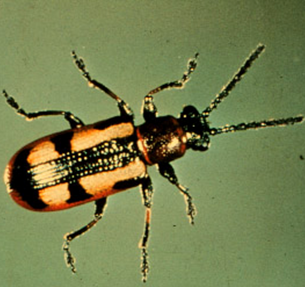
Common Asparagus Beetle Degree Days
Base temperature = 50°F
- Egg laying at 150 – 240 DD50
(Amelanchier full bloom, redbud early to full bloom, Black Hills spruce bud caps splitting)
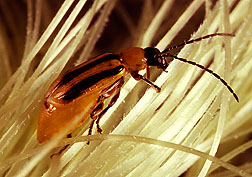
Corn Rootworm Degree Days
Base temperature = 50°F
- Adult beetles present at 1,300 DD50
(Canada thistle seed ripe, Queen Anne’s lace early bloom)
European Corn Borer Degree Days
Base temperature = 50°F
- 1st spring moths at 375 DD50
(Spiraea x vanhouttei in full bloom) - 1st eggs at 450 DD50
(Pagoda dogwood late bloom) - Peak spring moths at 631 DD50
(Black locust full bloom) - 1st summer moths at 1,400 DD50
(Mountain-ash fruit golden yellow, most Canada thistle seed ripe) - 1st eggs at 1,450 DD50
- 1st egg hatch at 1,550 DD50
- Peak summer moths at 1,733 DD50
- Summer treatment period at 1,550 – 2,100 DD50
(Queen Anne’s lace full bloom – 1,500 to goldenrod early bloom – 2,100)
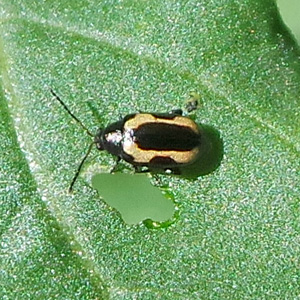
Fleabeetle Degree Days
Base temperature = 50°F
- 150-200 DD50
(Norway maple late bloom, Amelanchier blooming, redbud early bloom)
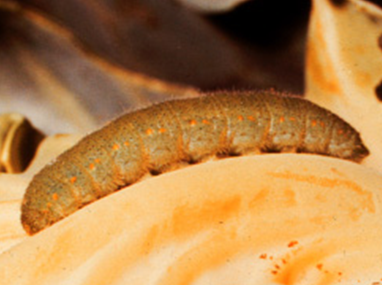
Imported Cabbageworm Degree Days
Base temperature = 50°F
- Adult butterflies at 150-240 DD50
(Amelanchier full bloom, redbud early to full bloom, Black Hills spruce bud caps splitting)
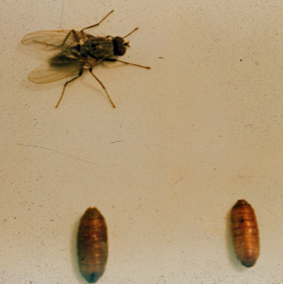
Onion Maggots
Base temperature = 40°F
- 680, 1950, 3230 DD40 for 1st, 2nd, & 3rd generation flies
- 1st generation eggs laid 230-280 DD40
Squash Vine Borer Degree Days
Base temperature = 50°F
- Egg laying at 900-1,000 DD50
(Chicory full bloom)
Seed Corn Maggot Degree Days
Base temperature = 39°F
- 200, 600 for 1st and 2nd generation flies
Common Fruit Insects that can be monitored by degree days or indicator plants
Apple Maggot* Degree Days
Base temperature = 50°F
- 1st adult fly emergence 900 DD50
- 1st egg laying 1,100 DD50
- Peak fly emergence 1,600 DD50
- Peak egg laying 1,750 DD50
- End of fly emergence 2,800 DD50
*These degree days assume normal soil moisture. Under dry conditions, all apple maggot events will be delayed until the soil is moist.
Codling Moth Degree Days
Base temperature = 50°F
- 1st generation moth emergence 150 DD50
- Eggs laid 250 DD50
- 1st generation peak moth emergence 500 DD50
- Peak egg laying 550 DD50
- 2nd generation first moth emergence 1,150 DD50
- 2nd generation peak moth emergence 1,600 DD50
- 2nd generation peak egg laying 1,700 DD50
Obliquebanded Leafroller Degree Days
Base temperature = 43°F
- 1st generation moth emergence 600 DD43
- 1st generation peak moth emergence 800 DD43
- 1st generation peak egg laying 1,250 DD43
- 2nd generation moth emergence 2,050 DD43
- 2nd generation first eggs laid 2,300 DD43
Author: Karen Delahaut, UW-Madison Fresh Market Vegetable Program
Revised: 8/6/2012
Item number: XHT1087
Download Article

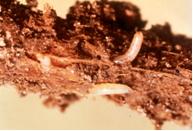
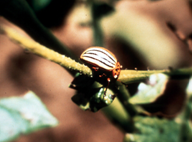
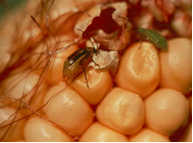
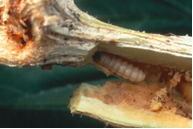

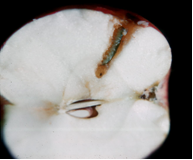
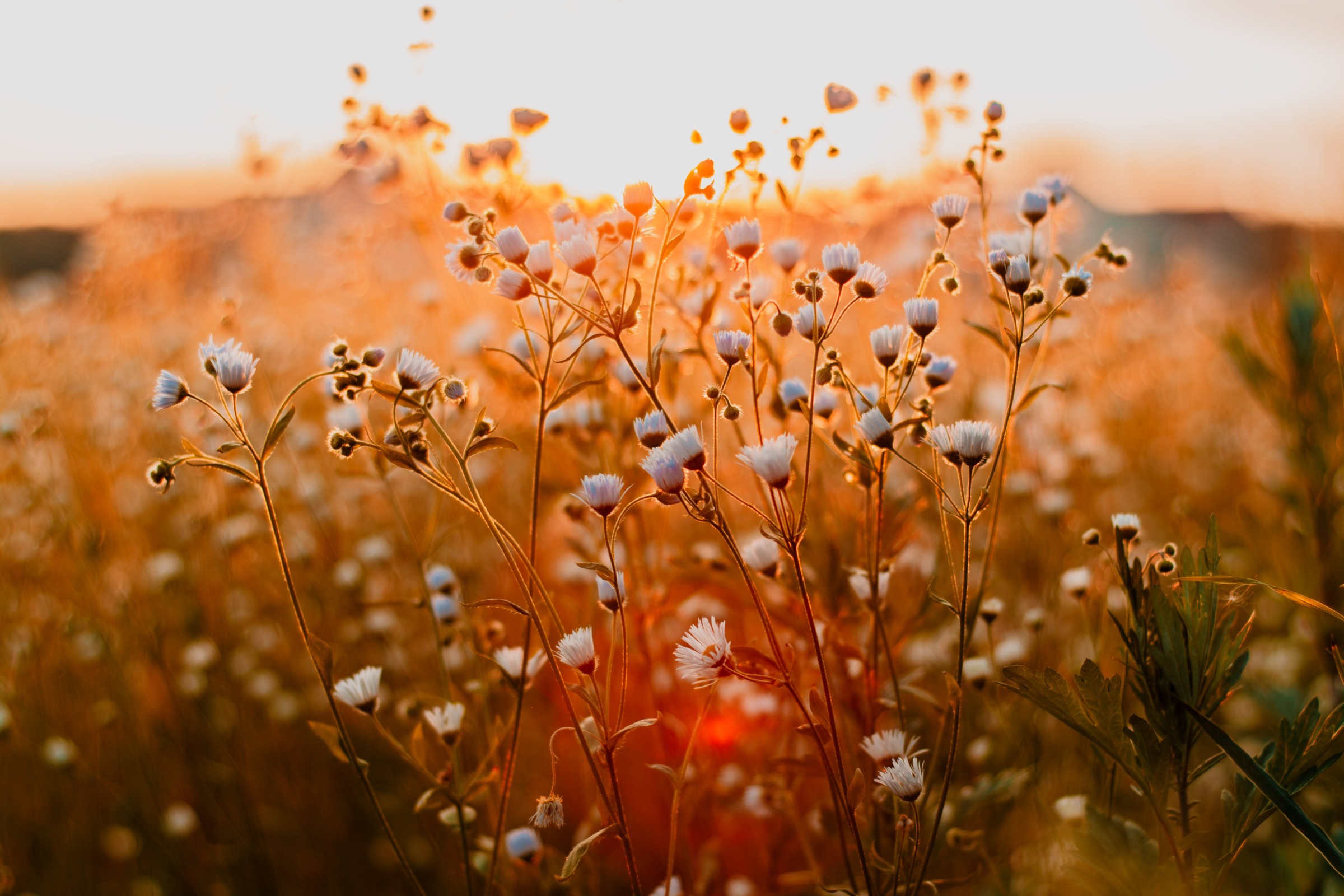
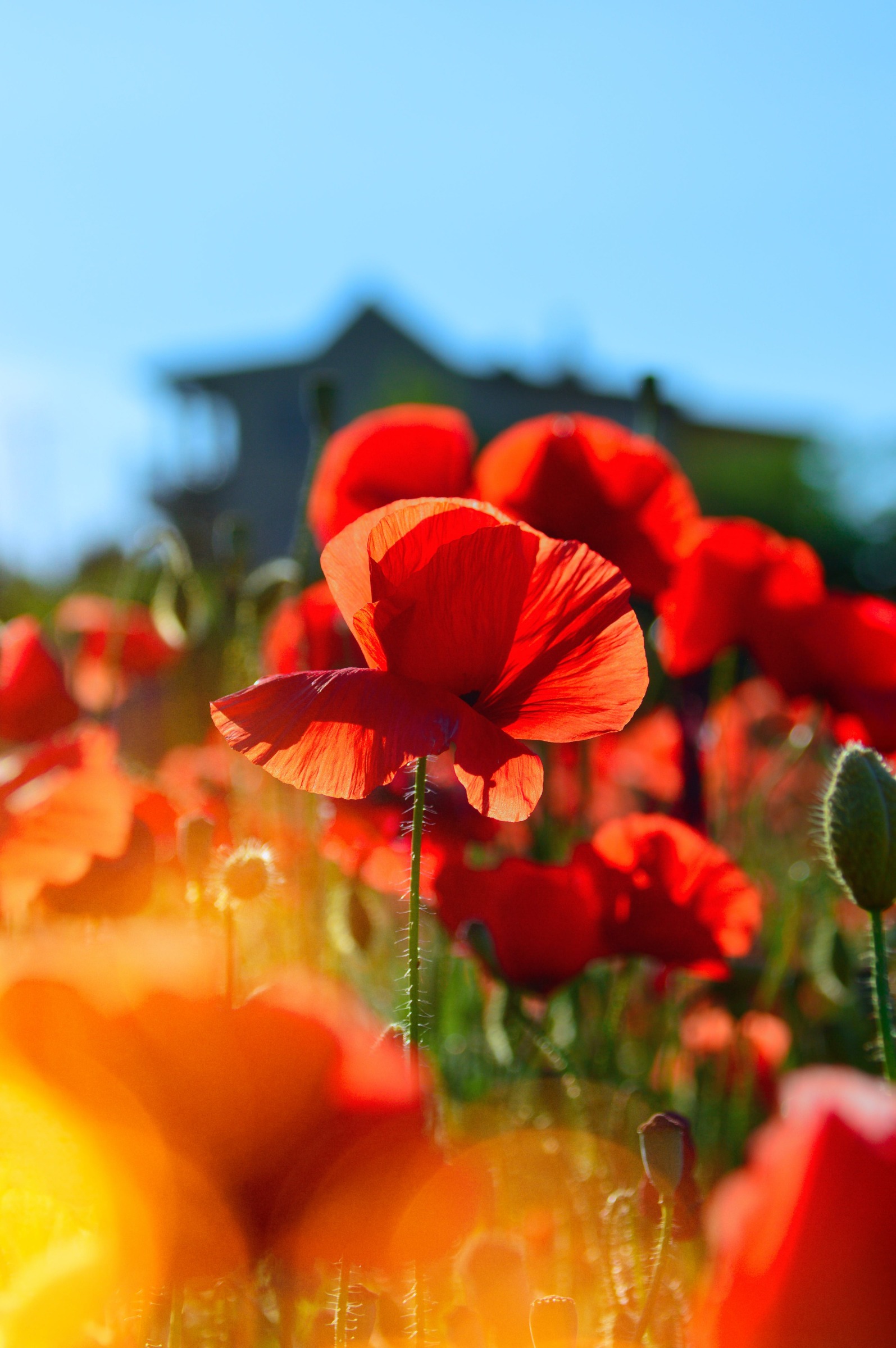


 Biological Control of Insects and Mites: An Introduction to Beneficial Natural Enemies and Their Use in Pest Management
Biological Control of Insects and Mites: An Introduction to Beneficial Natural Enemies and Their Use in Pest Management Bagging Apples for Insect and Disease Control
Bagging Apples for Insect and Disease Control Potato Leafhopper
Potato Leafhopper Squash Vine Borer
Squash Vine Borer


